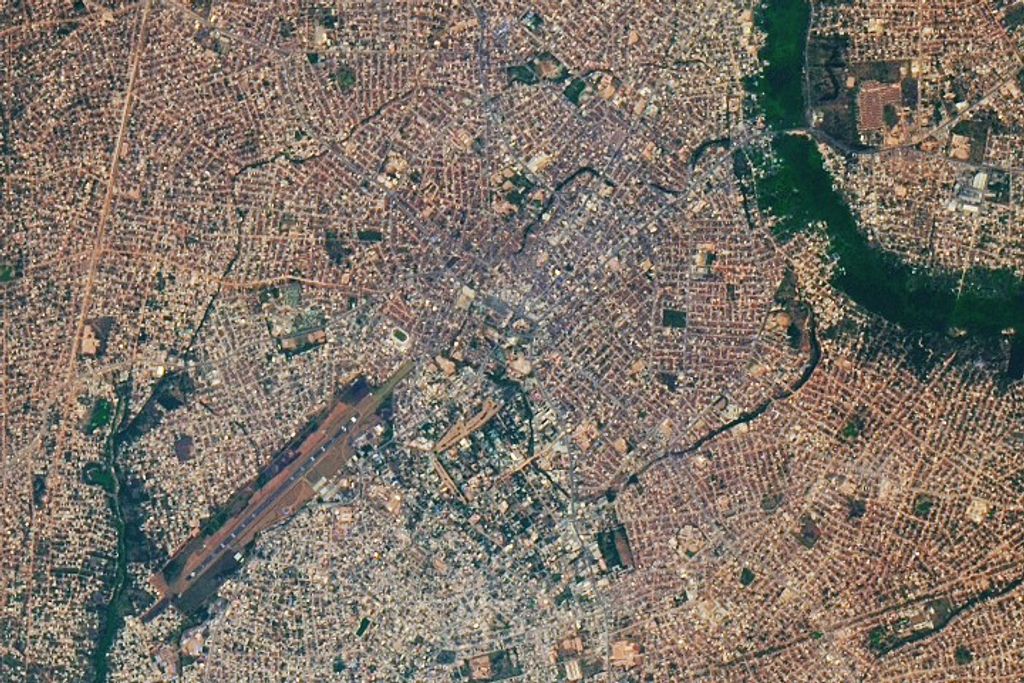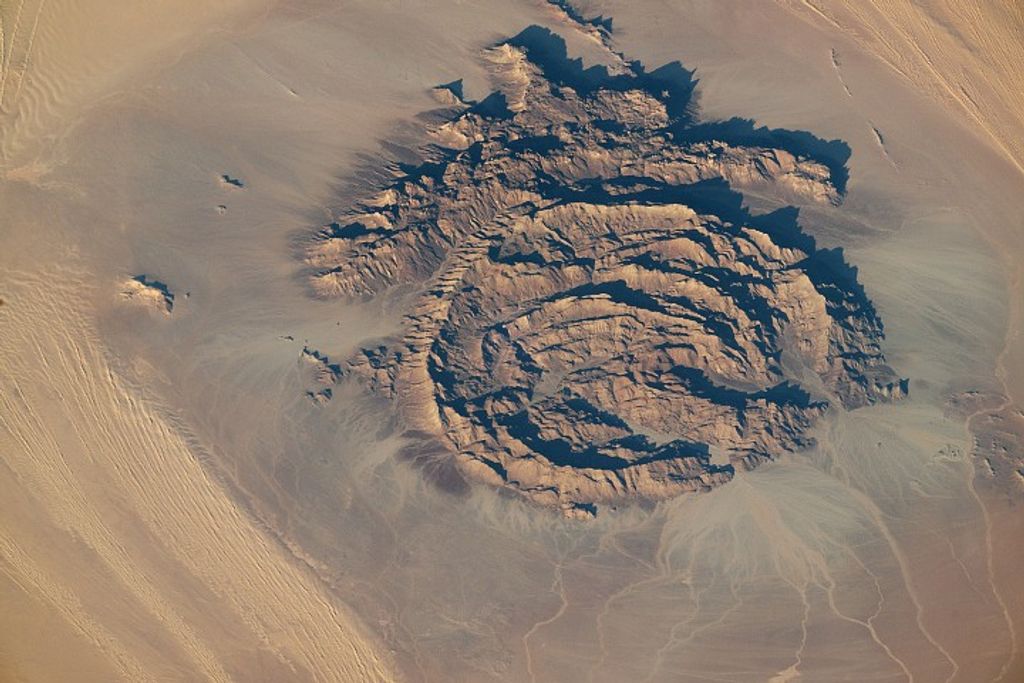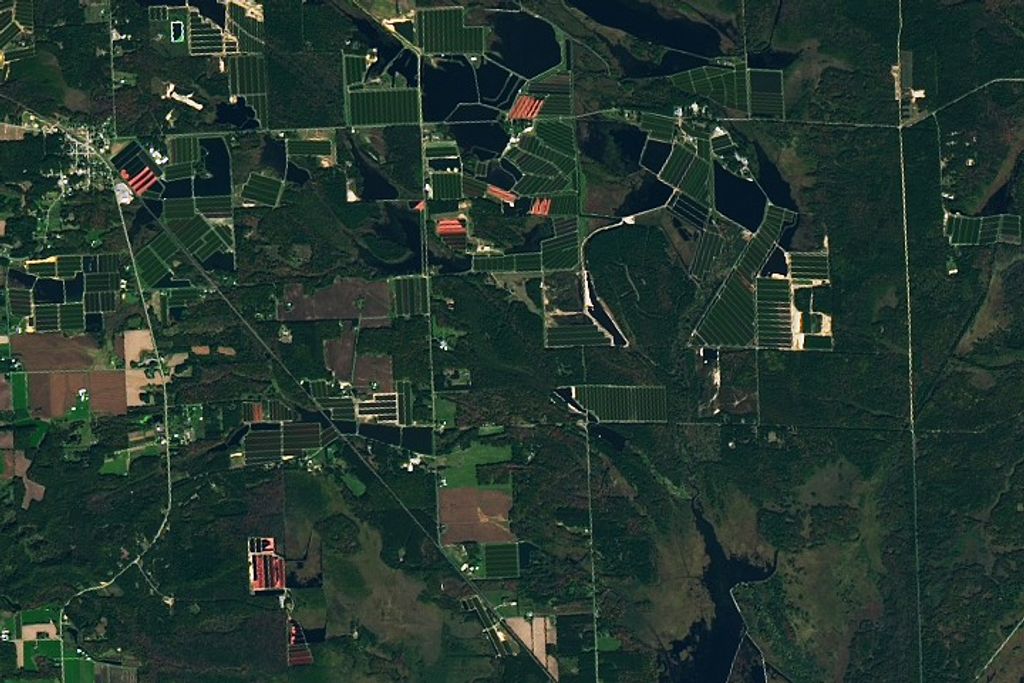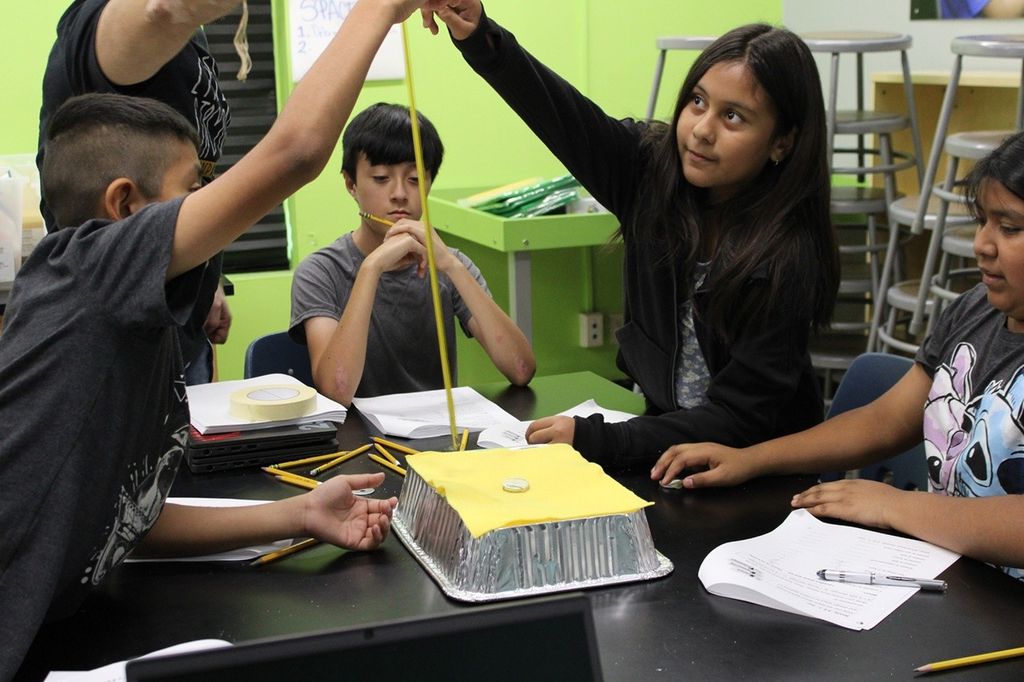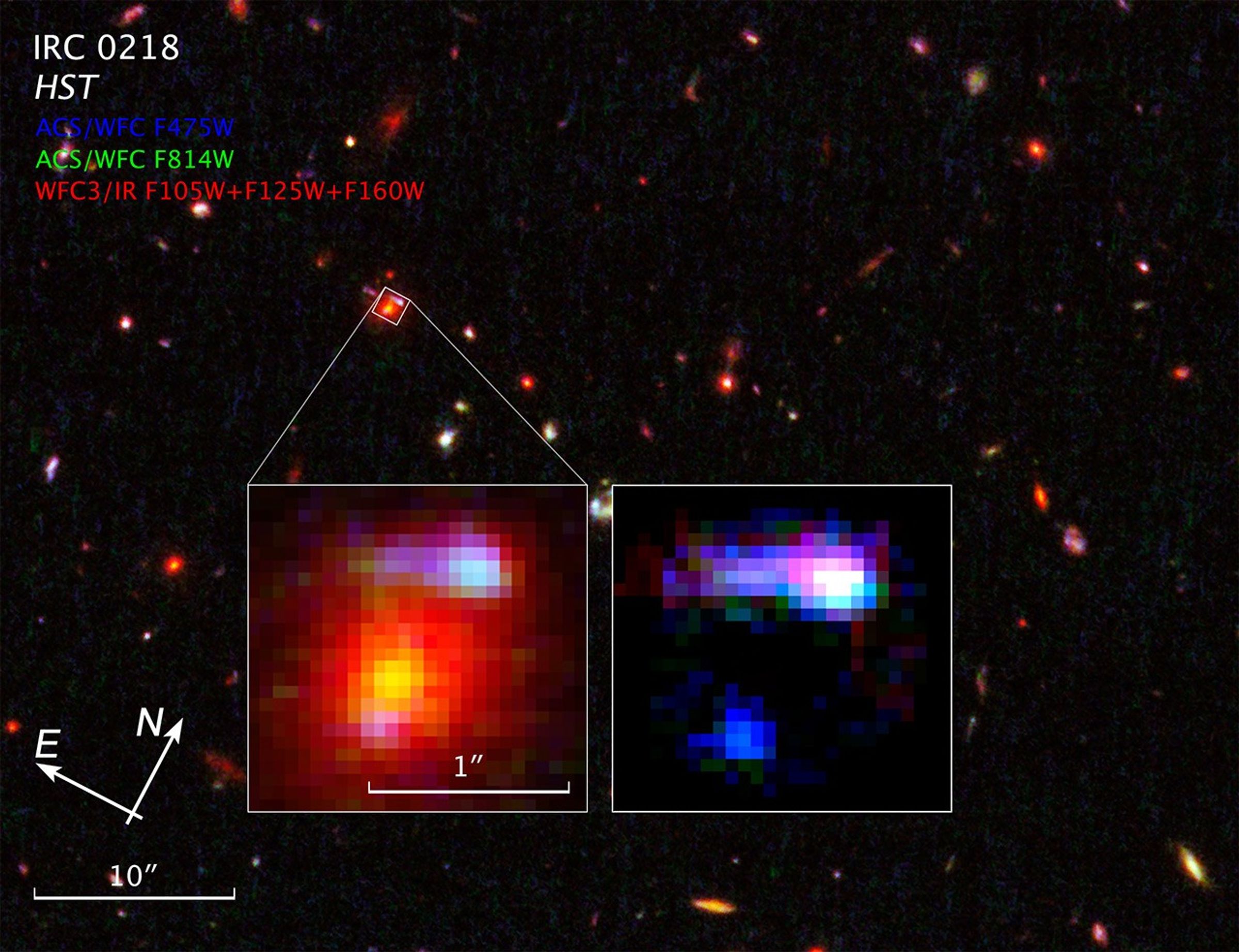1 min read
Gravitational Lensing by Galaxy in Cluster IRC 0218
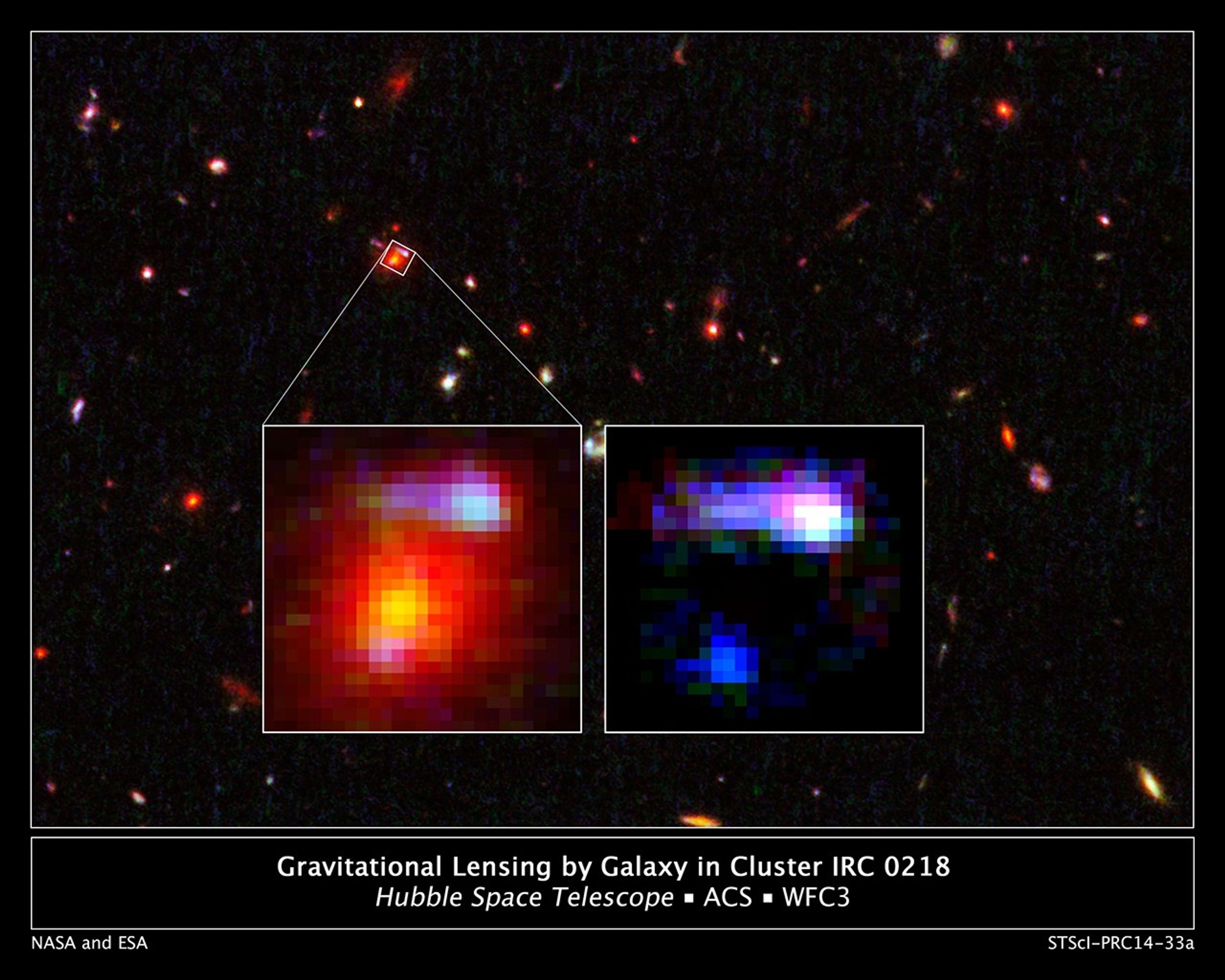
These Hubble Space Telescope images reveal the most distant cosmic lens yet found, a massive elliptical galaxy whose powerful gravity is magnifying the light from a faraway galaxy behind it.
The giant elliptical is the red object in the enlarged view at left. Its red color comes from the light from older stars. The galaxy is seen as it appeared 9.6 billion years ago and is one of the brightest members in a distant cluster of galaxies, called IRC 0218. The background image shows the entire region surrounding the galaxy.
In the enlarged view, the lighter-colored blobs at upper right and lower left are the distorted and magnified shapes of a more distant spiral galaxy behind the foreground elliptical. The giant elliptical is so massive that its enormous gravitational field deflects light passing through it, much as an optical lens bends light to form an image. This phenomenon, called gravitational lensing, magnifies, brightens, and distorts images from faraway objects that might otherwise be too faint to observe even with the largest telescopes.
Astronomers needed spectroscopy to determine that the blobby features were two images of the same distant galaxy, located 10.7 billion light-years from Earth. In the enlarged view at right, astronomers have subtracted the image of the giant red elliptical to show the more distant spiral galaxy. The glow of young stars makes the galaxy appear blue. The white area at upper right is probably a region of star formation.
The images were made by combining visible-light observations from the Advanced Camera for Surveys and near-infrared exposures from the Wide Field Camera 3.
About the Object
- R.A. PositionR.A. PositionRight ascension – analogous to longitude – is one component of an object's position.3h 32m 38s.5
- Dec. PositionDec. PositionDeclination – analogous to latitude – is one component of an object's position.-05° 10' 19".9
- ConstellationConstellationOne of 88 recognized regions of the celestial sphere in which the object appears.Eridanus
About the Data
- Data DescriptionData DescriptionProposal: A description of the observations, their scientific justification, and the links to the data available in the science archive.
Science Team: The astronomers who planned the observations and analyzed the data. "PI" refers to the Principal Investigator.The image was created from Hubble data from the following proposal: 12590, PI: C. Popovich (Texas A & M University) et al. The science team comprises: K. Wong (Academia Sinica Institute of Astronomy & Astrophysics, Taiwan), K.-V. Tran (Texas A&M University), S. Suyu (Academia Sinica Institute of Astronomy & Astrophysics, Taiwan), I. Momcheva (Yale University), G. Brammer (STScI), M. Brodwin (University of Missouri), A. Gonzalez (University of Florida), A. Halkola and G. Kacprzak (Swinburne University), A. Koekemoer (STScI), and C. Papovich (Texas A&M University). - InstrumentInstrumentThe science instrument used to produce the data.HST>ACS/WFC and HST>WFC3/IR
- Exposure DatesExposure DatesThe date(s) that the telescope made its observations and the total exposure time.November and December 2011, Exposure Time: 3.3 hours
- FiltersFiltersThe camera filters that were used in the science observations.ACS/WFC: F475W (g) and F814W (I) WFC3/IR: F105W (Y), F125W (J), and F160W (H)
- Object NameObject NameA name or catalog number that astronomers use to identify an astronomical object.IRC 0218
- Object DescriptionObject DescriptionThe type of astronomical object.Gravitational Lensing Cluster of Galaxies
- Release DateJuly 31, 2014
- Science ReleaseHubble Shows Farthest Lensing Galaxy Yields Clues to Early Universe
- Credit

This image is a composite of separate exposures acquired by the ACS/WFC and WFC3/IR instruments. Several filters were used to sample various wavelengths. The color results from assigning different hues (colors) to each monochromatic (grayscale) image as follows: Blue: F475W (g) Green: F814W (I) Red: F105W (Y) + F125W (J) + F160W (H)

Share
Details
Claire Andreoli
NASA’s Goddard Space Flight Center
Greenbelt, Maryland
claire.andreoli@nasa.gov







